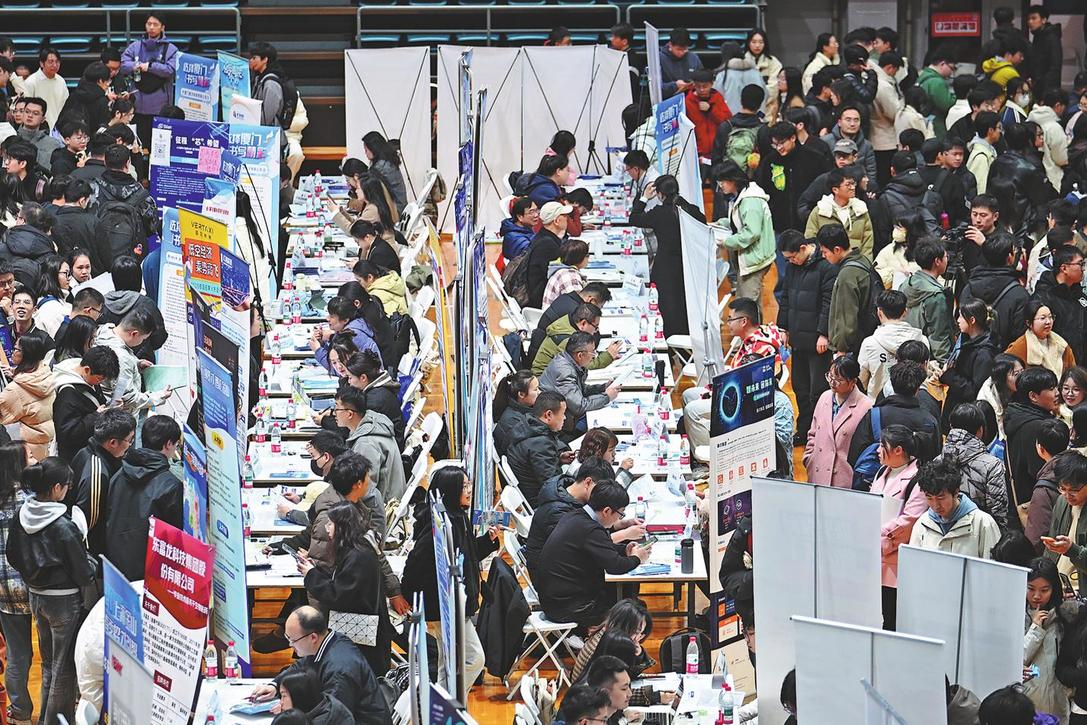EU China's top trade partner in Jan-Feb
By LIU ZHIHUA | China Daily | Updated: 2022-03-18 09:03

Further opening-up to brighten ties with Malaysia, other countries
With the European Union surpassing the Association of Southeast Asian Nations to become China's largest trading partner in the first two months of the year, the China-EU trade demonstrates resilience and vitality, but it will take some more time to figure out if the EU can hold top place over the long term, said Gao Feng, a spokesman for China's Ministry of Commerce, in an online media briefing on Thursday.
"China is willing to join hands with the EU to proactively promote the liberalization and facilitation of trade and investment, safeguard the stability and smooth operations of industrial and supply chains, and jointly elevate China-EU economic and trade cooperation to benefit enterprises and people of both sides," he said.
During the January-February period, bilateral trade between China and the EU surged 14.8 percent year-on-year to reach $137.16 billion, which was $570 million more than the ASEAN-China trade value. China and the EU also achieved a record $828.1 billion in bilateral goods trade last year, according to the MOC.
"China and the EU are mutually important trading partners, and have strong economic complementarity, wide cooperation space and great development potential," Gao said.
The spokesman also said the implementation of the Regional Comprehensive Economic Partnership agreement in Malaysia from Friday will further boost trade and investment cooperation between China and Malaysia, and benefit enterprises and consumers of both countries as the two countries deliver on their market openness commitments and apply RCEP rules in various areas.
That will also enhance the optimization and deep integration of regional industrial and supply chains to make more contributions to regional economic growth, he said.
The trade treaty, signed in November 2020 by 15 Asia-Pacific economies, officially took effect on Jan 1 for 10 members, followed by South Korea on Feb 1.
China and Malaysia have also been important trading partners for years. China is also the largest trading partner of Malaysia. Data from the Chinese side showed bilateral trade value was worth $176.8 billion in 2021, up 34.5 percent year-on-year.
Chinese exports to Malaysia grew about 40 percent to $78.74 billion while its imports from the latter surged about 30 percent to $98.06 billion.
Malaysia is also an important outbound direct investment destination for China.
Gao also said China will continuously expand high-level opening-up and always welcomes investors from any country to do business and expand presence in China.
China will also continue to work hard to provide better services to investors from all over the world and create a market-oriented, law-based and internationalized business environment for them, he said.
He also said China's impressive performance in attracting foreign direct investment during the first two months of the year is attributable to the bright long-term prospects of the nation's economic fundamentals that have boosted foreign investor confidence, the effectiveness of Chinese authorities' policy measures to stabilize FDI and the continuously improving business climate in China.
Data from the MOC showed China's actual use of foreign capital surged 37.9 percent year-on-year to hit 243.7 billion yuan ($38.39 billion) during the January-February period.
According to a recent survey report jointly released by the American Chamber of Commerce in China and PwC, around two-thirds of the surveyed US companies plan to increase their investment in China this year.
Another report, released by the German Chamber of Commerce in China and KPMG, showed nearly 71 percent of German companies in China plan to invest more in the country.
Zhou Mi, a senior researcher at the Chinese Academy of International Trade and Economic Cooperation, said China's undented attractiveness to foreign investors showed their long-term confidence in the Chinese economy and China's growing significance in their global market layout.
























